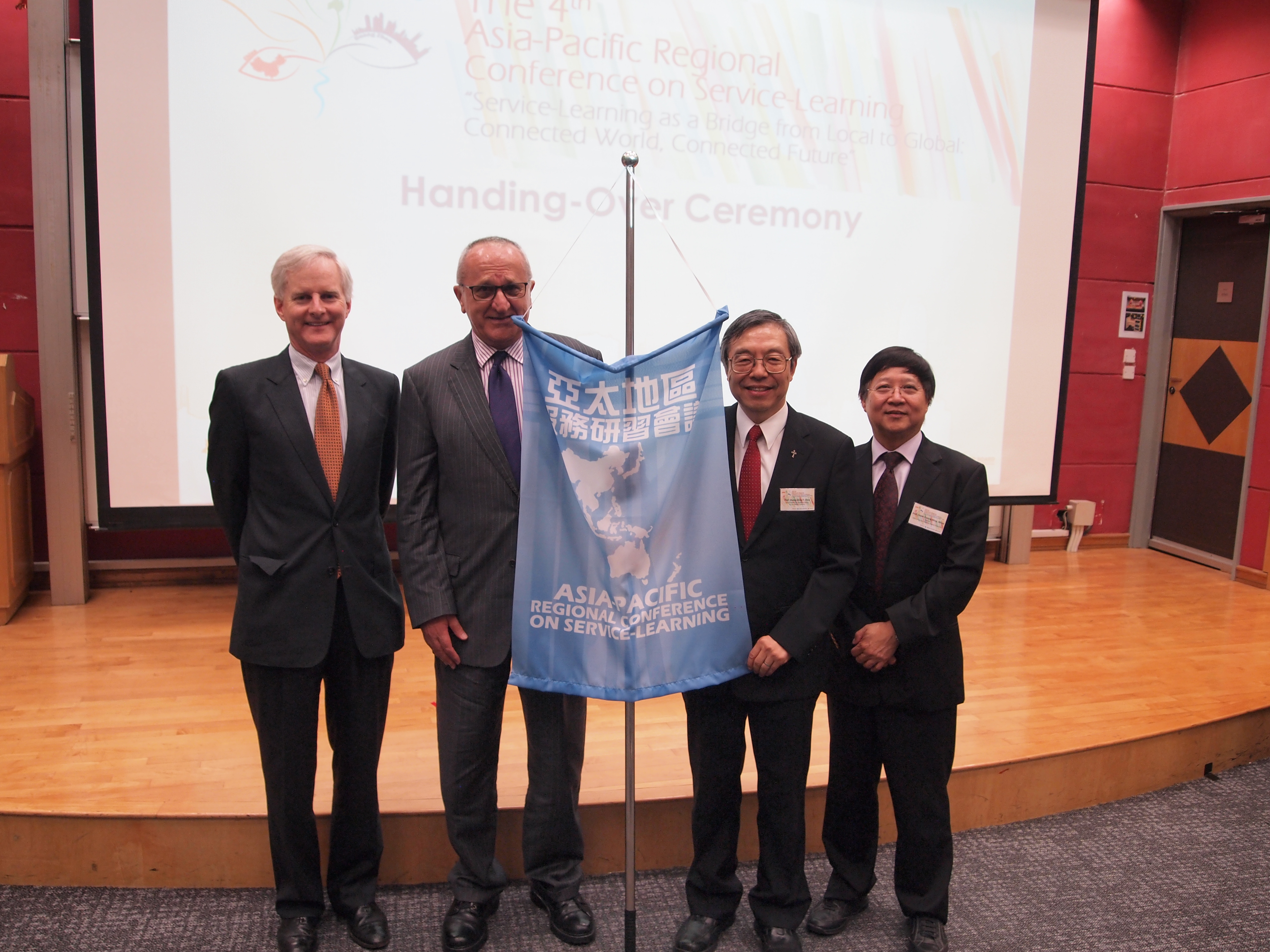Location
MD202, Paul Cardinal Shen Medical Building, Fu Jen University
Start Date
29-5-2015 10:40 AM
End Date
29-5-2015 11:50 AM
Description
While internships bridge students' academic major to the world of work, in this paper, we focus on practicums as vehicles for service leadership development. In the summers of 2013 and 2014, Lingnan University arranged 28 full-time practicums in 13 partner organizations, mainly not-for-profit organizations or social enterprises, for students with prior service-learning experience. Practicums lasted 6 weeks in 2013, and 8 weeks in 2014. Students attended a 3-hour preparatory workshop on service leadership, and an interim review meeting.
Through interviews with 26 practicum students and site supervisors from 13 partner organizations, we identified three factors that enabled practicum students to develop as service leaders. The first factor was the availability of practicum tasks that required innovation to identify and meet hitherto unmet needs. Successful practicums allowed students to create or extend events or arrangements that made a clear difference to the achievement of the social mission of their respective host organizations. Students were empowered to initiate responsibility for service planning, organization and delivery, including the need to anticipate and respond to end -user contingencies and demands.
The second broad factor was the availability of a supportive site supervisor, willing and able to provide timely briefings, guidance, coaching and feedback. The third factor was the developmental readiness of the practicum student. Developmentally -ready students were psychologically prepared to seek out new challenges, cared about both end-user service-recipients and other stakeholders, were committed to making a difference, and had sufficient skills, knowledge, and self-confidence to work things out independently and arrive at their own decisions. They found effective ways to approach their site supervisor whenever necessary, and by demonstrating their competence and integrity, they were able to build trust.
We highlight four cases, which reveal differences between traditional internships and the innovation -oriented nature of successful service leadership practicums. The first features a supportive site supervisor and two developmentally-ready practicum students. The second involves a moderately-supportive site supervisor, one developmentally-ready practicum student, and one moderately-ready practicum student. The third features a supportive site supervisor, one developmentally-ready practicum student, and one moderately-ready practicum student. The fourth involves a less-supportive site supervisor and a less-ready practicum student.
Recommended Citation
Snell, R. S., Chan, Y. L. M., Ma, H. K. C., & Chan, K. M. C. (2015, May). Key factors in encouraging and empowering undergraduates to practice service leadership through extra-curricular service-learning practicums. Paper presented at the 5th Asia-Pacific Regional Conference on Service-Learning: Love Journey: Community Engagement through Service-Learning, Fu Jen Catholic University, Taiwan.
Included in
Key factors in encouraging and empowering undergraduates to practice service leadership through extra-curricular service-learning practicums
MD202, Paul Cardinal Shen Medical Building, Fu Jen University
While internships bridge students' academic major to the world of work, in this paper, we focus on practicums as vehicles for service leadership development. In the summers of 2013 and 2014, Lingnan University arranged 28 full-time practicums in 13 partner organizations, mainly not-for-profit organizations or social enterprises, for students with prior service-learning experience. Practicums lasted 6 weeks in 2013, and 8 weeks in 2014. Students attended a 3-hour preparatory workshop on service leadership, and an interim review meeting.
Through interviews with 26 practicum students and site supervisors from 13 partner organizations, we identified three factors that enabled practicum students to develop as service leaders. The first factor was the availability of practicum tasks that required innovation to identify and meet hitherto unmet needs. Successful practicums allowed students to create or extend events or arrangements that made a clear difference to the achievement of the social mission of their respective host organizations. Students were empowered to initiate responsibility for service planning, organization and delivery, including the need to anticipate and respond to end -user contingencies and demands.
The second broad factor was the availability of a supportive site supervisor, willing and able to provide timely briefings, guidance, coaching and feedback. The third factor was the developmental readiness of the practicum student. Developmentally -ready students were psychologically prepared to seek out new challenges, cared about both end-user service-recipients and other stakeholders, were committed to making a difference, and had sufficient skills, knowledge, and self-confidence to work things out independently and arrive at their own decisions. They found effective ways to approach their site supervisor whenever necessary, and by demonstrating their competence and integrity, they were able to build trust.
We highlight four cases, which reveal differences between traditional internships and the innovation -oriented nature of successful service leadership practicums. The first features a supportive site supervisor and two developmentally-ready practicum students. The second involves a moderately-supportive site supervisor, one developmentally-ready practicum student, and one moderately-ready practicum student. The third features a supportive site supervisor, one developmentally-ready practicum student, and one moderately-ready practicum student. The fourth involves a less-supportive site supervisor and a less-ready practicum student.
